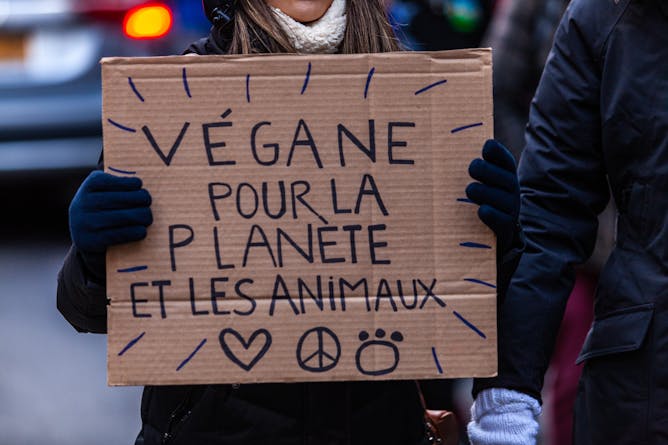|
For many of us, it’s hard to imagine even holding something written in medieval period, let alone taking risks for it in wartime. Today in The Conversation Canada, Jennifer Bain from Dalhousie University shares the extraordinary story of the wartime whereabouts of two ancient manuscripts written by a 12-century composer, writer and visionary, St. Hildegard of Bingen. A librarian stashed the manuscripts in a bank vault in Dresden in 1942 to protect them during the Second World War. After the city and its civilian population was devastated by
bombings 75 years ago, one of the manuscripts went missing and the other wound up in Soviet hands. Two women intervened to return the Soviet-held one to its rightful home.
Also today:
Regards,
|

Two manuscripts of the visionary, writer and composer St. Hildegard of Bingen (1098-1179) survived the Dresden bombings after a librarian stashed them in a bank vault.
(Avraham Pisarek/Deutsche Fotothek/Wikimedia)
Jennifer Bain, Dalhousie University
Two precious manuscripts hidden in a bank vault survived the Allied bombing of Dresden, but one wound up in Soviet hands — until it was smuggled home.
|

African American Vernacular English is part and parcel of Black identity. Its distinctive linguistic features are
denigrated — wrongly.
(Shutterstock)
Shana Poplack, L’Université d’Ottawa/University of Ottawa
African American Vernacular English is part and parcel of Black identity. Its distinctive linguistic features are — wrongly — denigrated.
|

Wet'suwet'en hereditary chiefs from left, Rob Alfred, John Ridsdale and Antoinette Austin, take part in a rally in Smithers, B.C., in January 2020 against the Coastal GasLink project.
THE CANADIAN PRESS/Jason Franson
Stepan Wood, University of British Columbia; Gordon Christie, University of British Columbia; Jocelyn Stacey, University of British Columbia
Reconciliation cannot be achieved by the brute force of the RCMP or the self-interests of energy companies.
|

PFAS are a class of about 5,000 compounds found in firefighting foam, flame retardants and non-stick cookware.
(Shutterstock)
Jonathan Van Hamme, Thompson Rivers University
Researchers continue to find PFAS-contaminated sites and waterways. Perhaps it is time to consider wider bans on these persistent chemicals.
|

An enhanced image of galaxy clusters.
(NASA/Shutterstock)
Jon Willis, University of Victoria
New research using the Hubble Space Telescope reveals that galaxies may be forming at faster rates than previously believed.
|

La militante végane Élizabeth Viola tient une pancarte durant une manifestation à Montréal. Le mouvement est diversifié dans ses actions mais prône la même idée: un refus de normaliser la consommation de produits animaliers.
Shutterstock
Alexia Renard, Université de Montréal
Le mouvement végane est multiple mais il converge vers une idée : un refus de normaliser la consommation de produits animaliers et l'exploitation des animaux.
|
Science + Technology
|
-
Richard Bowen, Colorado State University; Alan Rudolph, Colorado State University
In the real world, new diseases emerge from complex environments. To learn more about how, scientists set up whole artificial ecosystems in the lab, instead of focusing on just one factor at a time.
|
|
Politics
|
-
Timothy Joseph, College of the Holy Cross
President Trump's impeachment defense that the will of the president is no different from the will of the state and the good of the people has echoes in the decline of ancient Rome's democracy.
|
|
Health + Medicine
|
-
Linda-Gail Bekker, University of Cape Town
The discovery of a new strain of HIV gives scientists a better understanding of the virus.
|
|